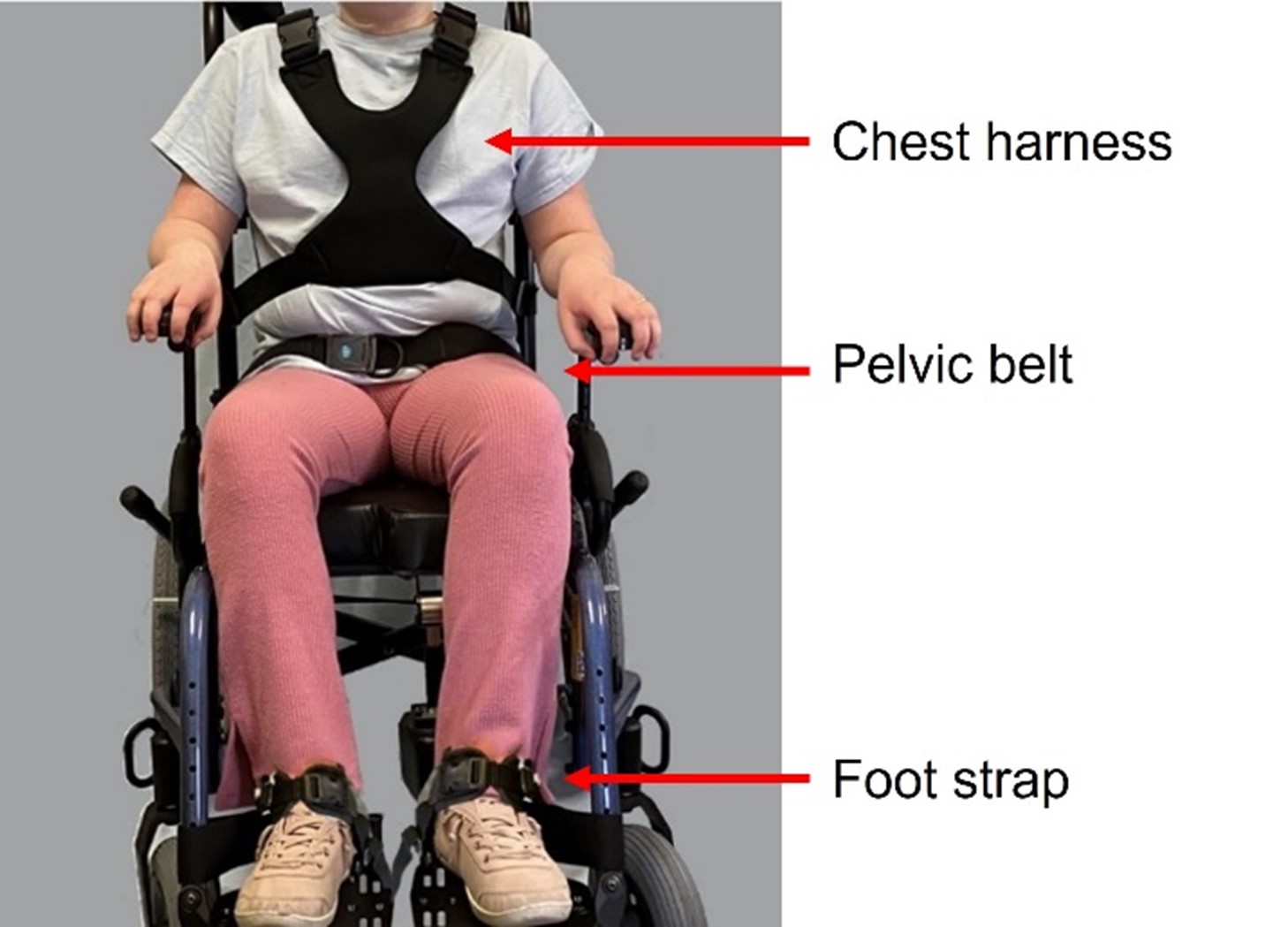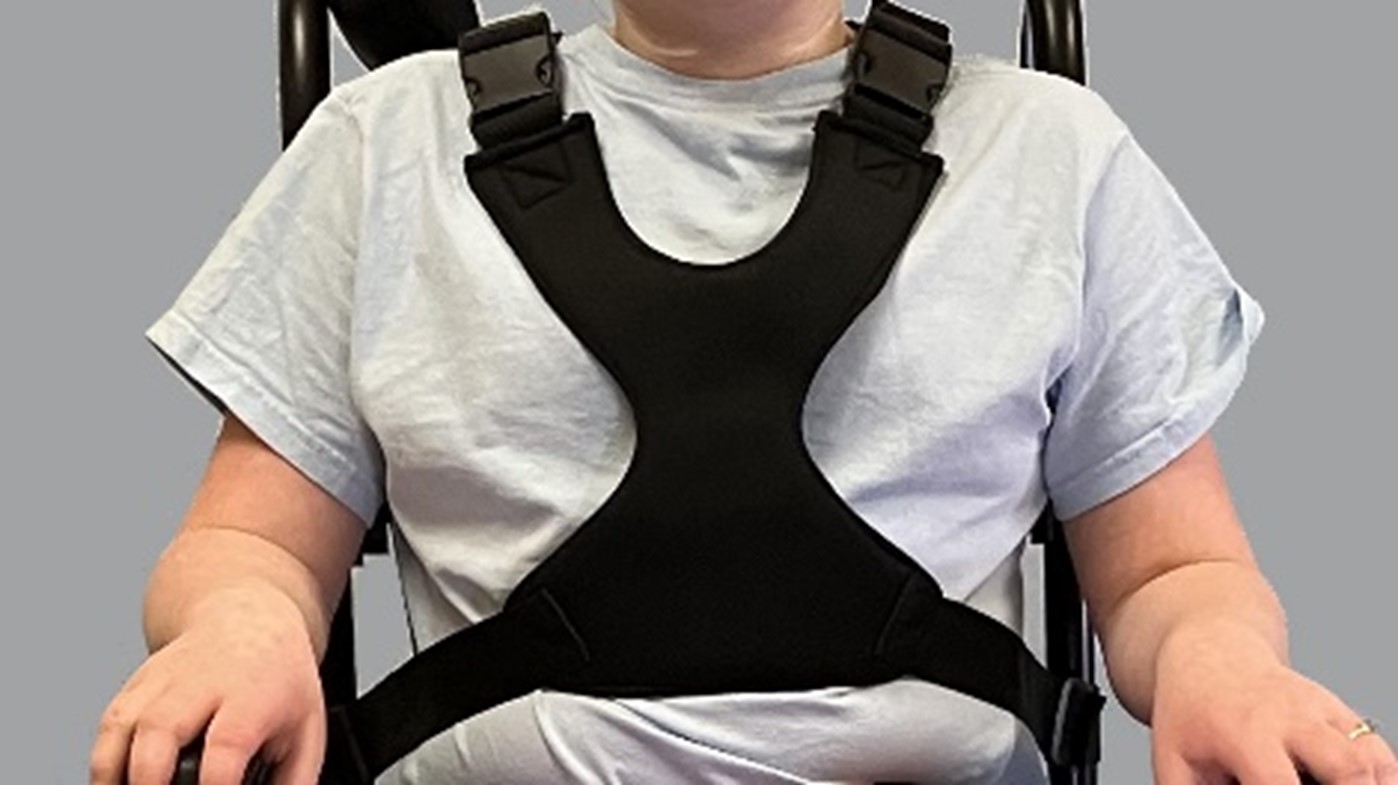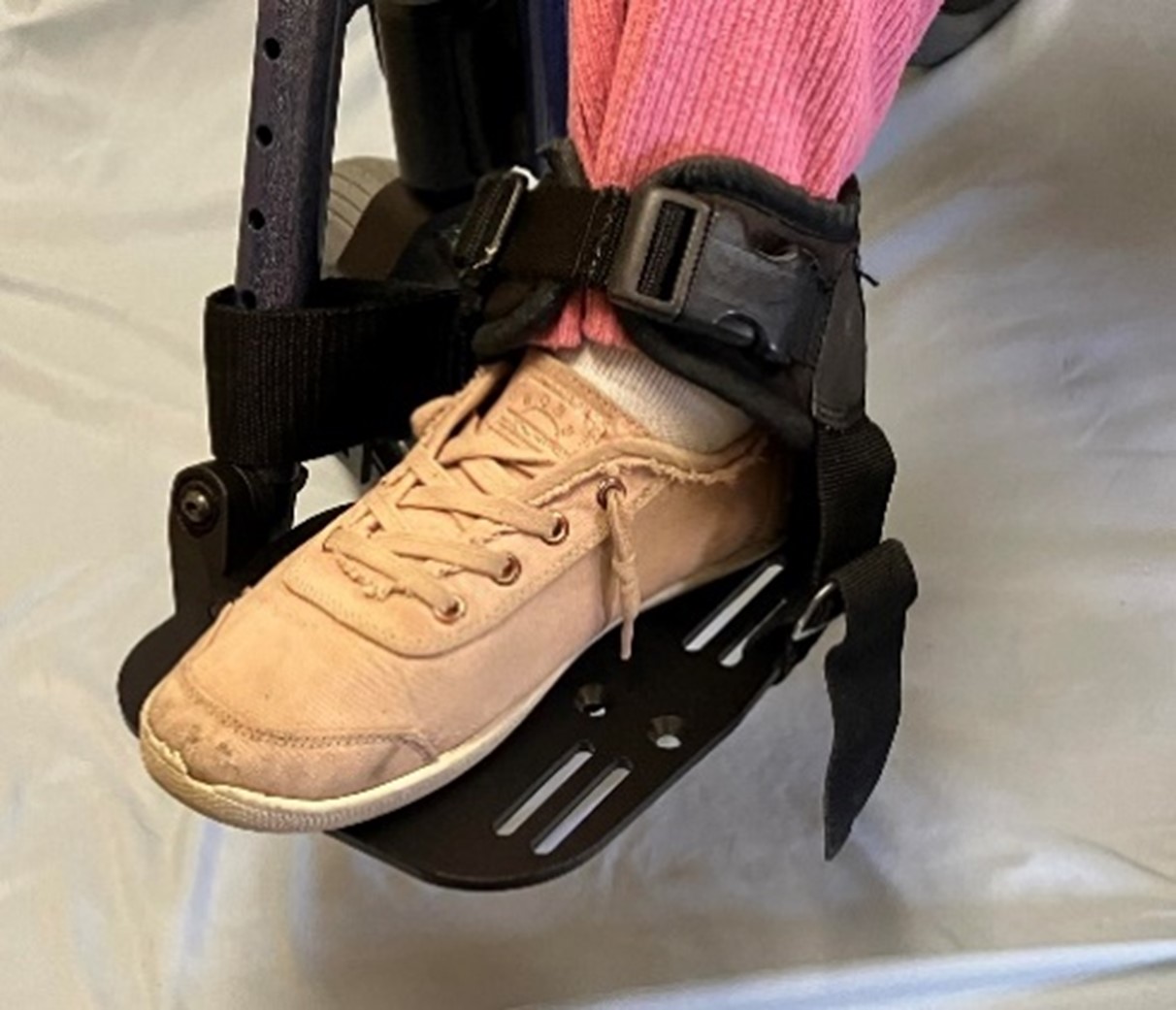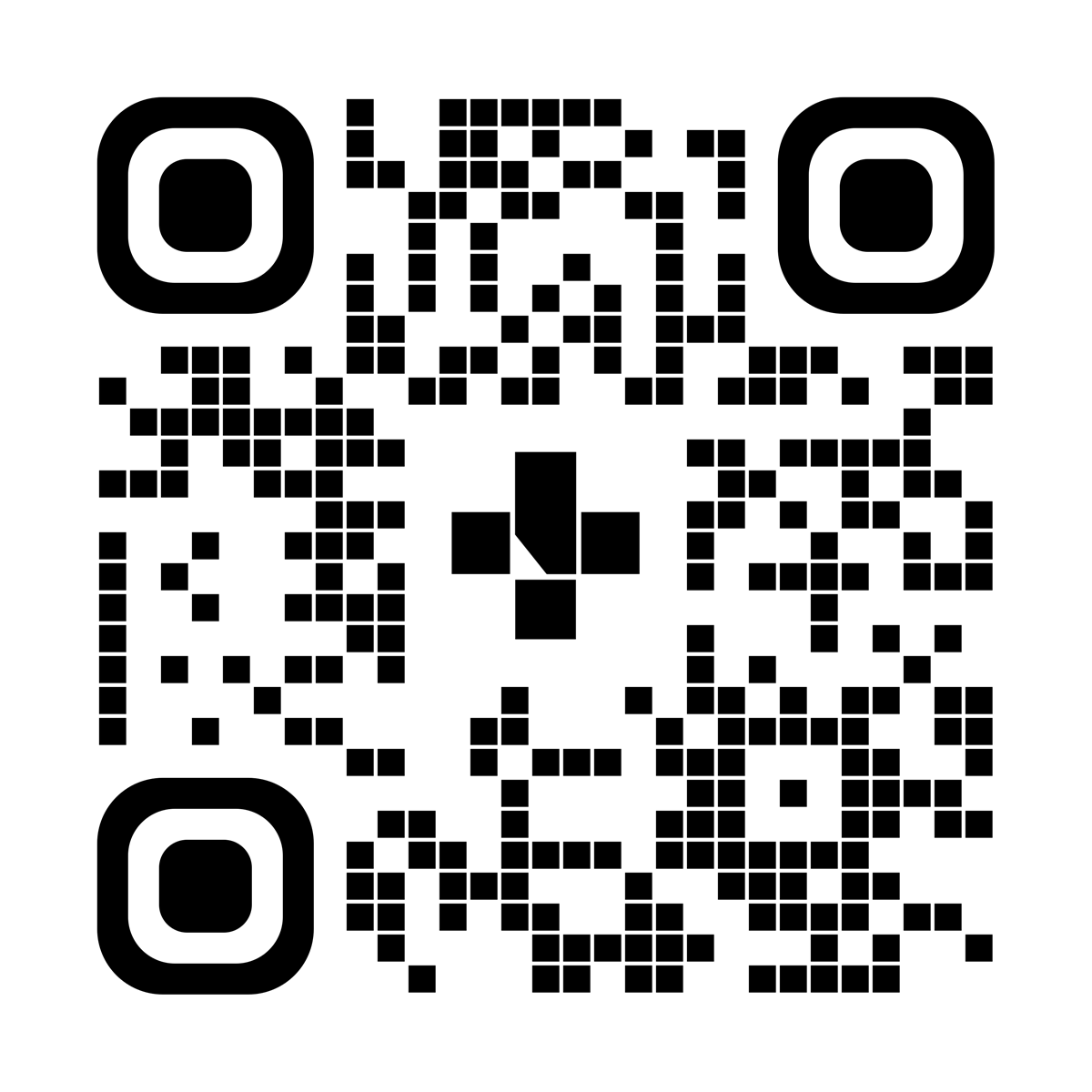Your Child's Equipment
How to use belts and straps
Why are there belts and straps on my child’s equipment?
The belts and straps on your child’s equipment are there to help keep your child well-positioned and safe. These can be found on a wide variety of pediatric equipment such as:
- wheelchairs
- activity chairs
- feeder seats
- shower commodes
- bath seats
- standing frames
Your child’s therapist will set up the belts and straps your child needs for good positioning, safety, and function in their equipment. There are 3 common types of belts and straps that are used with equipment. These include:
- chest straps or harnesses
- pelvic belts
- ankle huggers or foot straps

Chest strap or harness

There are different types of chest straps. Not all children need this type of support. A chest strap, or butterfly harness, is used to help your child sit upright. It can also help your child keep their head up.
A chest strap can also be used for safety. This is for children who lean to the side or fall forward when their equipment is moving. Some children may only use a chest strap or harness some of the time in their equipment.
Whenever your child is using a chest strap or harness:
Chest Strap:
- must be used with a pelvic belt
- over the ribs (not over the stomach)
- top of strap should be 2 fingers width below the armpit
- ideally done up under bulky clothes like jackets or coats
- should be snug enough that only 1 finger will fit under strap
Chest harnesses (butterfly straps) have anchor points over each shoulder and down near the hips:
- must be used with a pelvic belt
- when shoulder straps are used, top of backrest should be level with, or slightly above, the shoulders
- top of chest harness should be 2 fingers below the sternal notch (down below the “soft” part of the neck), about a hand width below the chin
- when there are 4 straps, the harness is usually loosened and tightened from the bottom straps so that it doesn’t end up going too high on the chest.
Important!
If a chest strap or harness is not used with a pelvic belt, there is a risk of injury.
If a chest strap or harness is not adjusted properly, there is a risk of injury.
Tip for caregivers
It can be hard for parents and caregivers to remember how high the chest strap should be on equipment. Take a photo of the straps on your child after your therapist has adjusted them. You can even print the photo and keep it with your child’s equipment as a reminder.
Pelvic belts
The pelvic belt holds your child’s hips back in the chair. This keeps them from sliding forward or arching up out of the seat. This helps with their overall posture, balance, and safety. Whenever your child is using equipment with a pelvic belt:
- the belt should be used every time
- it must be snug (one fingers width of room)
- it must be done up before any other belts or straps
- make sure your child’s hips are all the way back before doing up the belt
- it should be done up under any bulky clothing or coats
Important: If your child uses a wheelchair to ride in a vehicle, they must also have a car seat belt on in addition to any positioning belts.
Ankle huggers (foot straps)

Foot straps and ankle huggers are used to help anchor your child’s feet on footrests. This helps with their overall posture and balance. It can also help prevent injury to feet and legs. Children may only use this support some of the time in their equipment. Not all children need this support.
Ankle huggers or foot straps:
- must be used with a pelvic belt
- remember to open them before transferring out of the equipment
When should you call for help?
Contact your therapist if:
- Your child is not comfortable in the equipment.
- Your child has grown.
Contact the vendor if:
- There are broken parts on the equipment.
- Annual maintenance for moving parts.
To see this information online and learn more, visit MyHealth.Alberta.ca/health/aftercareinformation/pages/conditions.aspx?hwid=custom.ab_childs_equipment_belts_straps_inst.

For 24/7 nurse advice and general health information call Health Link at 811.
Current as of: November 28, 2023
Author: Pediatric Rehabilitation Services, Alberta Health Services
This material is not a substitute for the advice of a qualified health professional. This material is intended for general information only and is provided on an "as is", "where is" basis. Although reasonable efforts were made to confirm the accuracy of the information, Alberta Health Services does not make any representation or warranty, express, implied or statutory, as to the accuracy, reliability, completeness, applicability or fitness for a particular purpose of such information. Alberta Health Services expressly disclaims all liability for the use of these materials, and for any claims, actions, demands or suits arising from such use.
